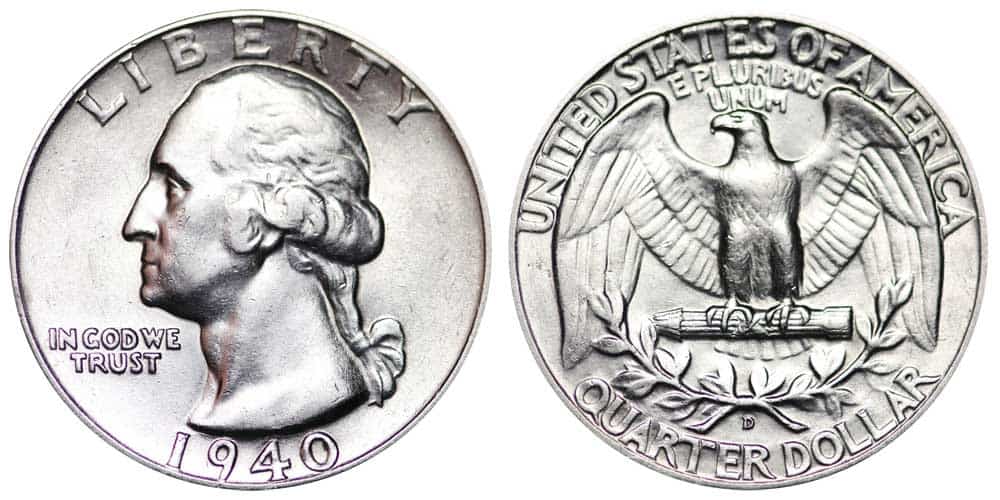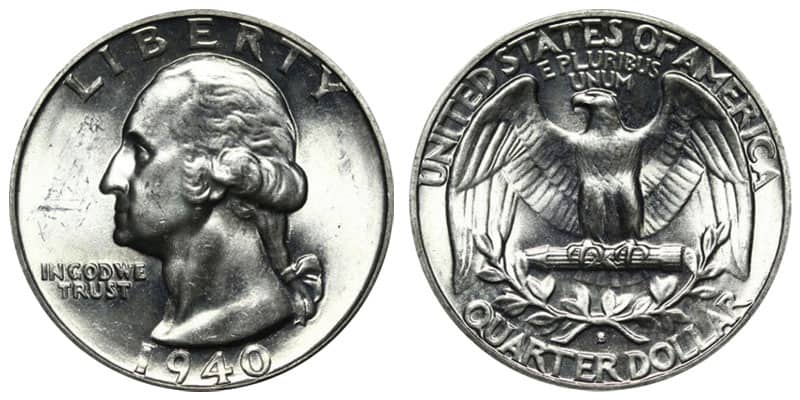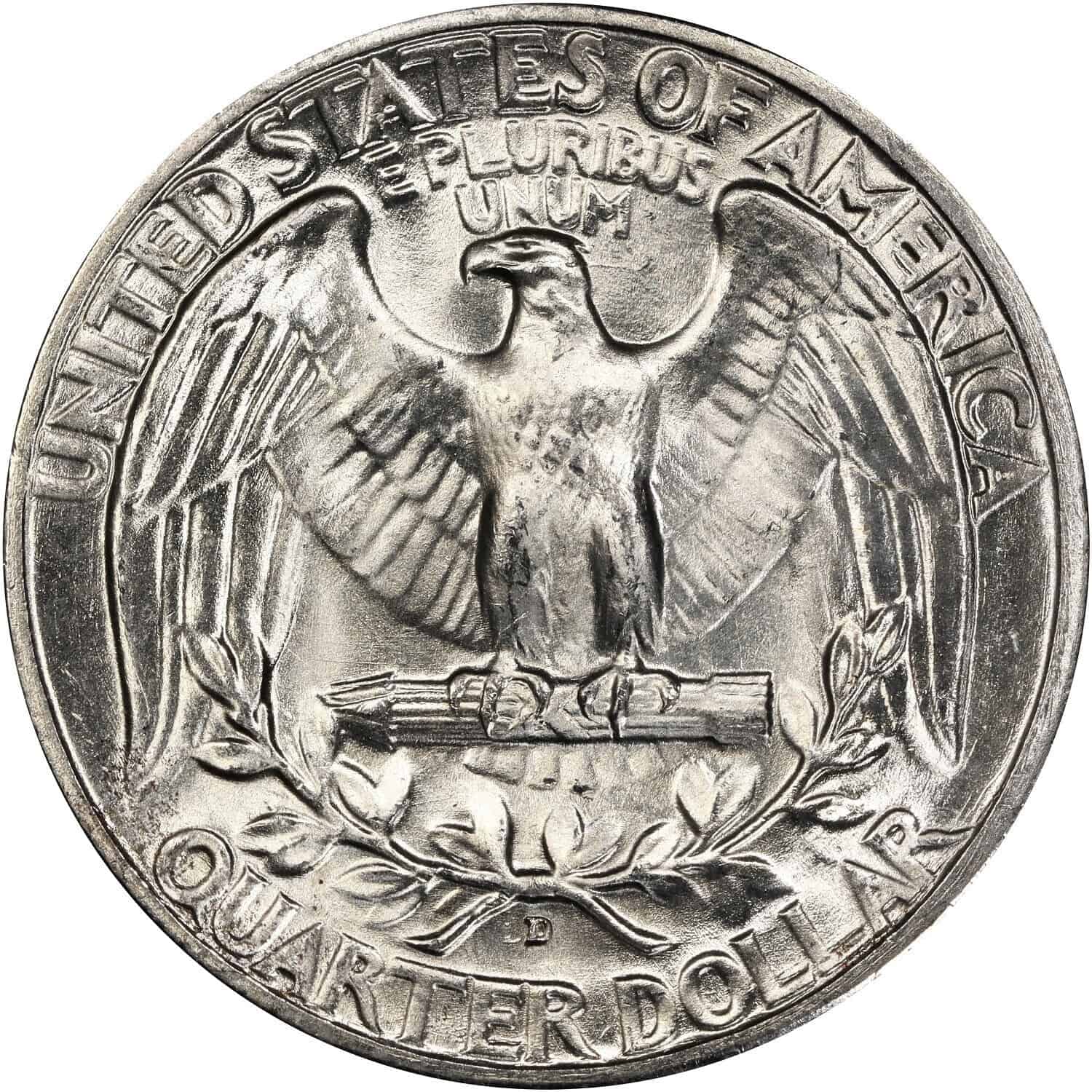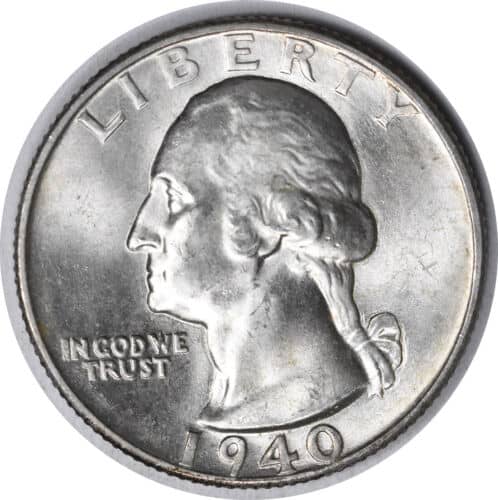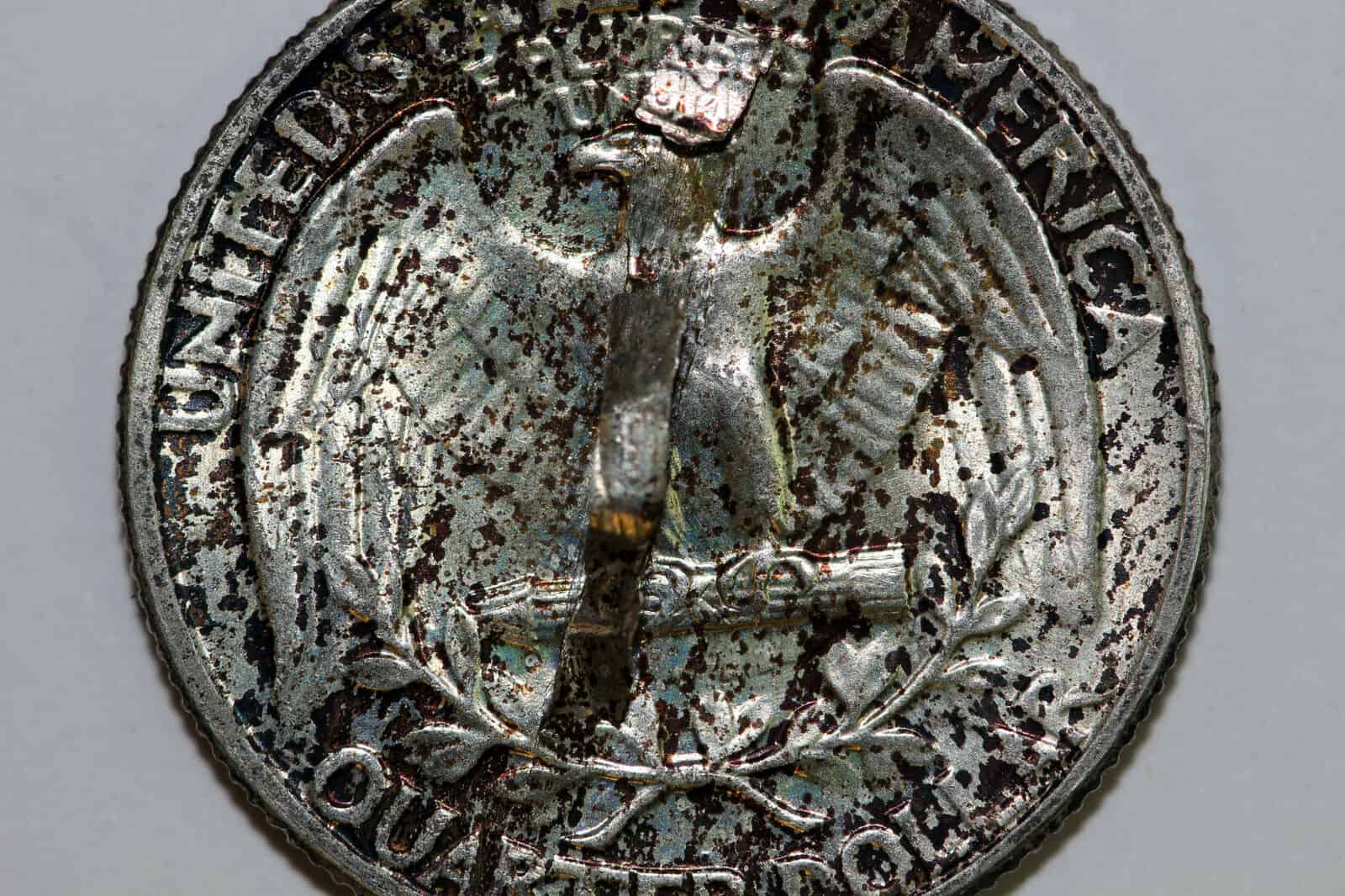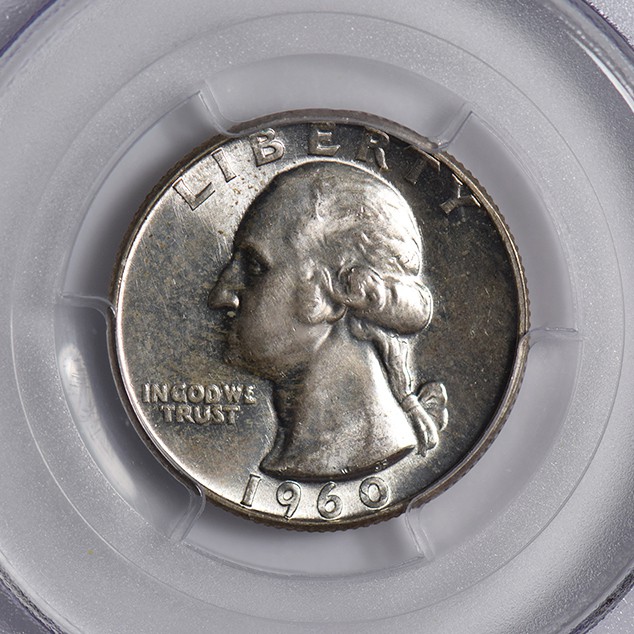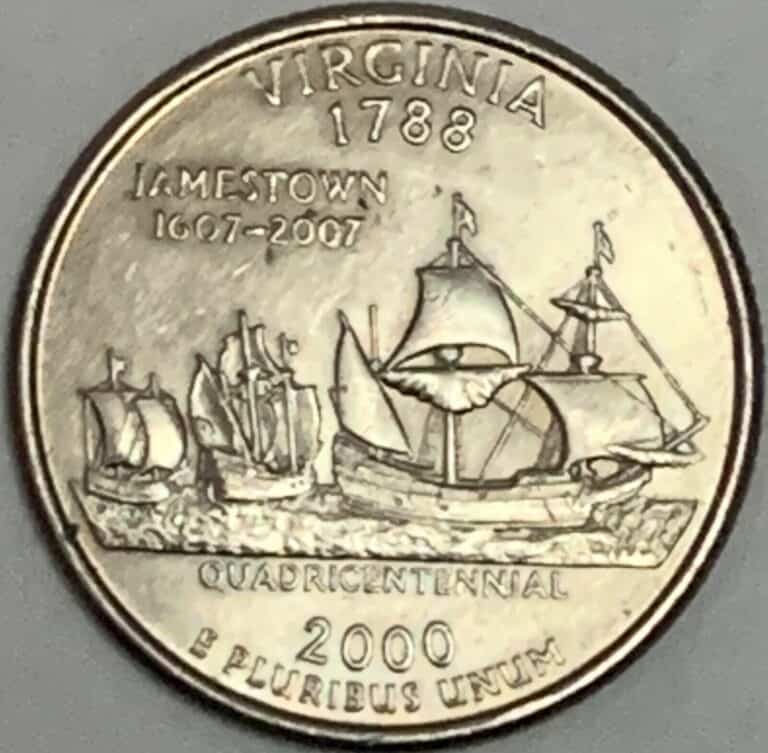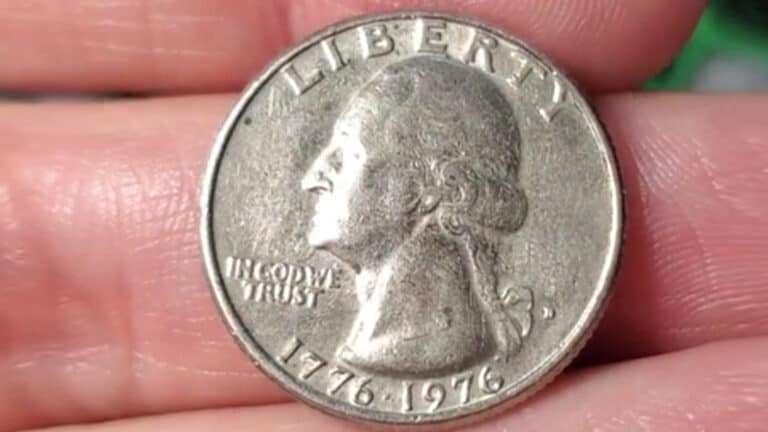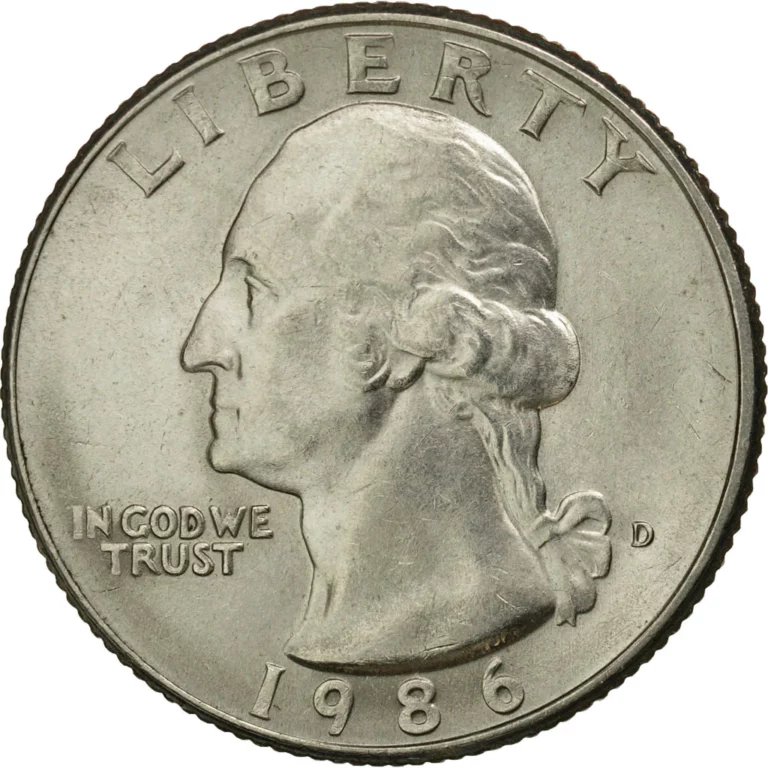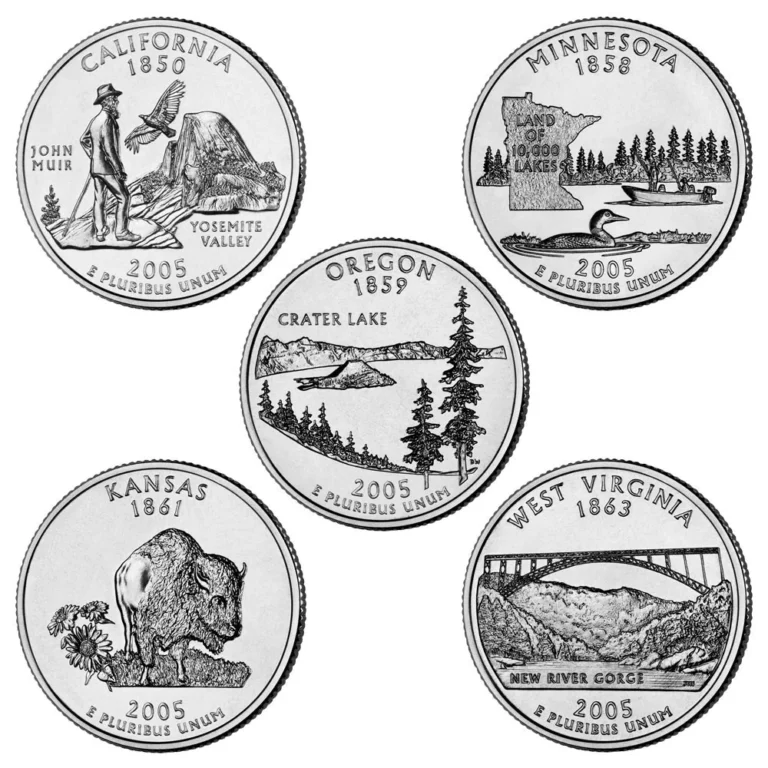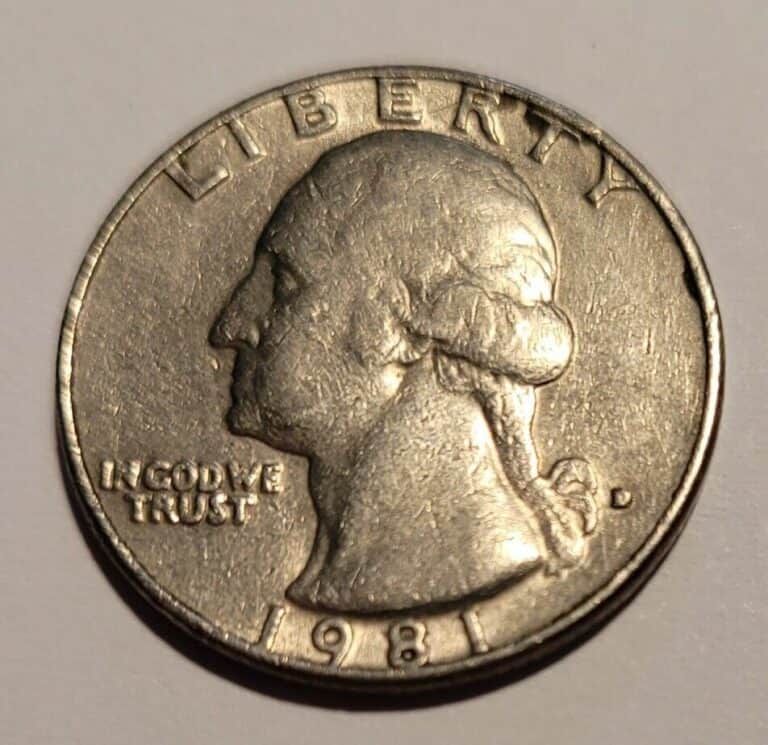1940 Quarter Value: How Much is it Worth Today?
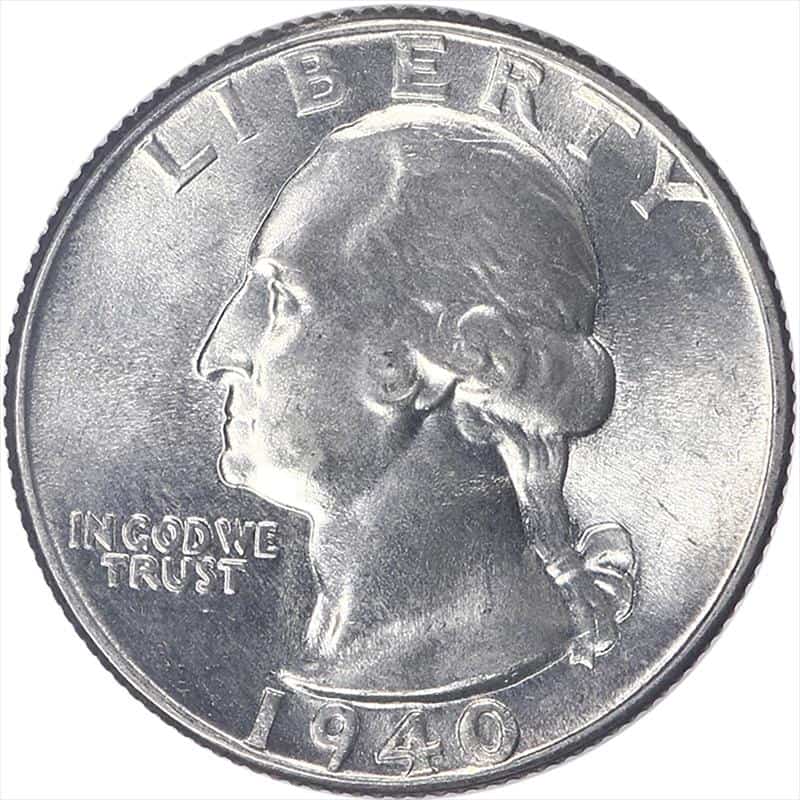
With World War II knocking on the doors of the United States, 1940 becomes the last year of peacetime before the country plunges into another global conflict. However, the effects of the war can already be felt before the official entry of the country into the foray, and we can see it in the 1940 Washington quarter.
In this article, you can learn about the 1940 quarter, its value, varieties, grading, errors, and frequently asked questions!
1940 Quarter Value |
||||
| Variety | VF20 | AU50 | MS60 | MS65 |
| 1940 No Mint Mark P Quarter Value | $8 | $13 | $20 | $56 |
| 1940 D Quarter Value | $16 | $67 | $140 | $285 |
| 1940 S Quarter Value | $8 | $20 | $32 | $65 |
| 1940 Proof Quarter Value | $55 (PR60) | $100 (PR63) | $140 (PR65) | $5,750 (PR68) |
1940 No Mint Mark P Quarter Value
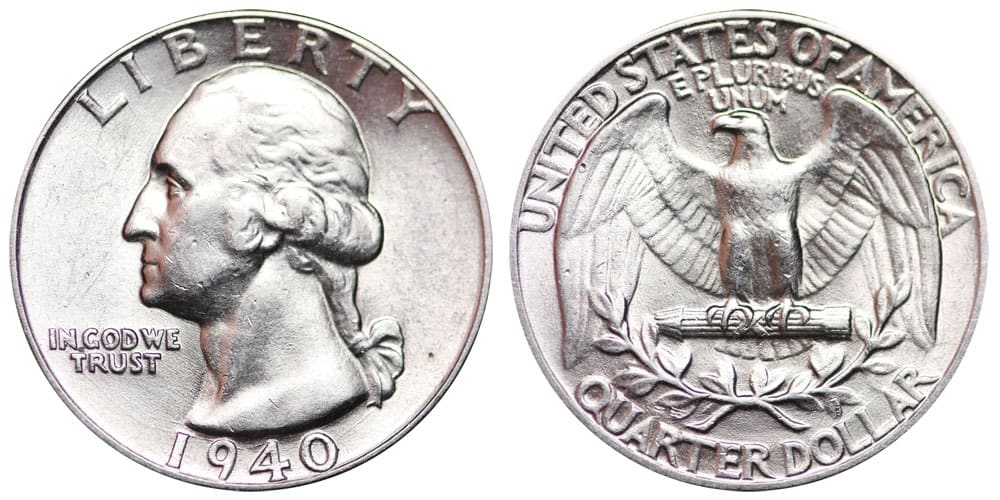
In 1940, World War II was picking up its pace, yet the United States had not been directly involved save for some hefty supply shipments to the Allies. These shipments, however, did affect the country, bolstering the economy that started a series of increasingly high mintages across the duration of the war.
The 1940 mintage of P quarters would be the last average issue, with over 35 million pieces, before it doubles in the following year. However, this amount is by no means a small one, and collectors were eager to save this coin by rolls upon their release.
This enkindled vigor among collectors to collect and stash mint coins, allowing the 1940 P quarters to remain plentiful across all grades, even up to the gems. However, this issue is still considered to be rarer than its wartime contemporaries (1941-1945).
The mintage resulted in a number of poorly-struck coins from overused dies, although coins with a good strike from fresh dies are just as plentiful. Collectors would find cherrypicking to be worth the time and effort, given that better pieces can be easy to obtain.
The 1940 quarter starts off cheap at $8, slowly increasing in price as quality increases up to the gem grades. Uncirculated coins start at $20, and their value does not greatly spike until MS67, which costs $250. The next major gem, MS68, is the highest available, and a piece with this grade can be had for $9,250.
The current auction record price is $19,975 for an MS68 piece.
1940 D Quarter Value
The 1940 D quarter sports the lowest mintage across the entire Washington series from the Denver Mint, second only to its first issue. Although there is no official reason for this drop in mintage, especially when the following year the number increases more than fourfold, numismatists believe that the surplus of 1939 pieces may have led to this low mintage.
This low mintage also makes the 1940 D quarter issue qualified to be considered a semi-key date in the series, together with other issues like the 1938 P, 1938 S, and 1939 S. Uncirculated coins and gem examples are only considerably easier to acquire due to the rampant saving of fresh rolls by collectors around the time.
The 1940 D quarter is known to have a better strike overall, although they lack aesthetic luster. Their luster significantly improves once you look for gems, if you do want to keep a nice-looking coin.
The 1940 D quarter starts at $8, much like the 1940 P, although it steeps higher as quality improves. Uncirculated coins start at $140, and it incrementally increases in strides until the gem grade MS65, which cost $285. Better gem examples become more expensive, with the highest quality available, MS67+, costing around $3,150.
The current auction record belongs to an MS68 coin, which sold for $17,500.
1940 S Quarter Value
While the 1940 D quarter had the lowest mintage across its series, the 1940 S quarter had a dramatic increase to the point that it had the highest pre-wartime mintage in its own series. Over 8 million pieces were minted this year, and it would double in the following year.
This increase in quantity had to be offset in quality. A growth of over 3 times its initial size resulted in worn dies that show clear erosion lines. To keep these dies in use, the Mint employees had to aggressively repolish them.
On one hand, some of the 1940 S quarters exhibit almost prooflike fields on certain areas of the coin. On the other hand, certain elements became understated and at times even outright went missing. Remnants of the polishing process were sometimes left in the form of random lines across the coins.
Despite these imperfections in the coining process, the 1940 S quarters are still generally desirable since the gem examples in this series had beautiful white frosty surfaces. Plus, this issue is also considered rarer than the 1940 P quarters, giving them some leverage in value.
The 1940 S quarters are considered to be plentiful across all grades even up to the gems.
They start off cheap like the other varieties at $8. It only slightly commands a higher price than the 1940 P quarter as you reach higher grades, as uncirculated coin start at $32. Prices incrementally increase until MS66, which costs $125. After that, the price spikes, with the highest available quality, MS68, costing around $13,000.
The current auction record for the 1940 S quarter is an MS68 piece, which sold for $10,200.
1940 Proof Quarter Value
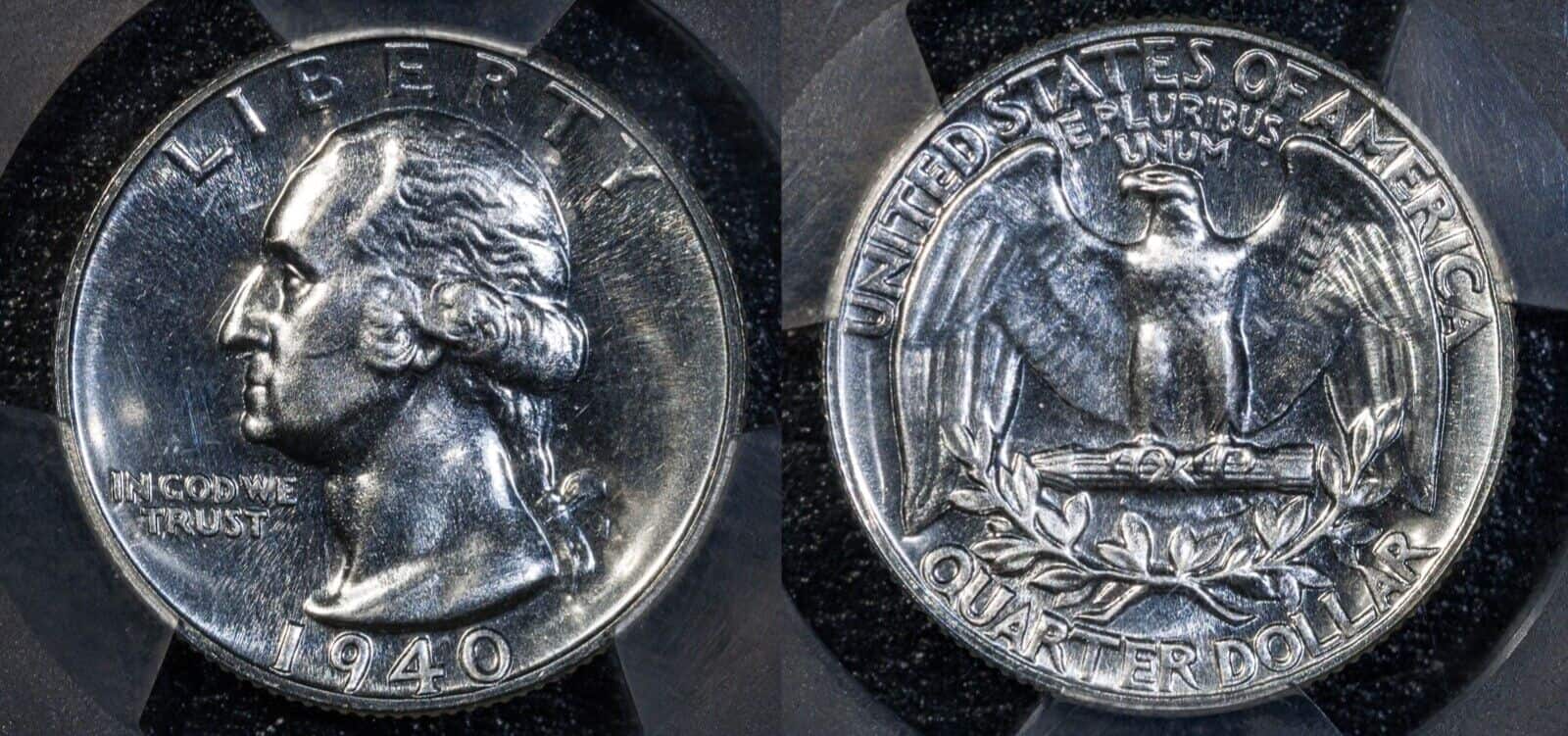
When proof coinage stopped in 1916, the US Mint showed very little interest in rekindling the production of these collector-focused coins. At the behest of then-Treasury Secretary and the blessing of avid stamp collector President Franklin Roosevelt, proof coinage resumed in 1936. The 1940 issue would be part of the early years of what is currently considered modern proof coinage.
Roger Burdette, who wrote an amazing book on this early period of modern coinage, mentioned that in producing over 11,000 proofs for the 1940 quarter issue, eight obverse dies and seven reverse dies were used. He mentions that around 15,000 pieces were actually minted, but stricter quality control and some coins lost to assays would drop the actual mintage lower than what was officially announced.
1940 proof quarters start at $55, steadily increasing in value as quality increases, up to the gem grade PR66, which costs $165. The price spikes up until the highest available quality, PR68+, at $15,000.
The current auction record price is $8,625 for a PR68 piece.
1940 Quarter Grading
The 1940 Washington quarter is often judged based on the Sheldon coin grading scale. This is a numerical scale that starts from 1 and ends at 70, with 1 indicating the worst coin quality and 70 indicating a perfect coin in pristine condition. Qualitative descriptions such as Good, Fine, and Uncirculated often accompany this number designation.
Rare 1940 Quarter Error List
1940 Quarter RPM Error
The mintmark found on non-P coins is usually not part of the design transferred from the die. Instead, Mint workers punch the mintmark separately from the design. Oftentimes, they punch the mintmark multiple times to ensure a clear mark. However, the consecutive punches may not always align properly. This gives rise to the repunched mintmark error.
As mentioned, this error is exclusive to coins that are not minted in the Philadelphia Mint. Both 1940 D and S quarters exhibit varieties of the RPM error, although the more prominent is the 1940 D quarters.
The current auction record price for a 1940 D quarter with this error is $2,585, which had a grade of MS66.
1940 Quarter DDO Error
Hubs contain a positive image of the design, and they are used to transfer the design onto a blank die. Dies are expected to have a negative image of the design, which would then be used to transfer the design to the coin. However, to achieve a clear negative image on the die, the hub may be pressed multiple times to the die. When these consecutive punches do not properly align with each other, it causes the doubled die error.
In a doubled die error, certain elements of the coin design are duplicated, and often the duplicate design underneath exhibits itself as a slight nub on certain edges of the design. All varieties of the 1940 quarter have a DDO (doubled die on the obverse) on them. However, the most prominent of them are those of the 1940 D quarter.
Additionally, a 1940 S quarter variety is known to exhibit both the DDO and RPM error; the mintmark of the Washington quarter is found on the reverse, so these errors are present on both sides of the coin.
The current auction record for a 1940 D quarter with the DDO error belongs to an MS66 coin, which sold for $2,880.
1940 Quarter Lamination Error
Earlier in the coining process, planchets are cut out of a sheet of metal. Since most coins are made of a certain composition of metals (in the case of Washington quarters, it is 90% silver and 10% copper), the sheet of metal may not always be pure. Certain impurities and imperfect layering of the component metals may cause the coin to flake off once struck.
It is more accurate to call the error a delamination error since the planchet delaminates and pieces of the planchet would either crack or flake altogether. This can occur before or after a strike. A 1940 P quarter coin sold on eBay was found with this error, where the coin delaminates on the reverse, leaving a streak of torn metal vertically across the eagle. This coin is currently being sold at $75.
1940 Quarter FAQ
How much silver is in a 1940 silver quarter?
The 1940 Washington silver quarter has a composition of 90% silver and 10% copper. This comes out to about 0.1808 oz of silver found in these quarters. Their silver melt value as of 2023 is $4.19, which is slightly less than a circulated coin, but more than the face value of the coin.
Is there anything special about a 1940 quarter?
The 1940 P and S quarters are not particularly special issues, considered to be plentiful issues across all grades up to the gems. However, on the other hand, the 1940 D quarter is considered a semi-key date in the Washington quarter series. Having one of the lowest mintages across the D quarter series, the 1940 D quarter is considered to be rarer than the other varieties.
Saved only by the rampant saving up of fresh rolls, the 1940 D quarter commands a significantly higher premium than the other varieties, its price curve increasing very steeply, especially upon reaching high gem grades.
Meanwhile, there are also certain coins that exhibit imperfections. DDO and RPM varieties have been known to be prominent in this issue, with a variety exhibiting both errors on both sides of the coin.
How much is a 1940 quarter worth NGC?
The prices and values listed in this article are based on the Professional Coin Grading Services (PCGS) price guide. Although the Numismatic Guaranty Company (NGC) maintains a separate price guide, the difference is usually around the same ballpark. They usually only vary on the prices of better gem examples.
NGC lists the 1940 P quarter as having a price from $8 to $8,500, while PCGS lists a price range of $8 to $9,250. NGC has a price range for the 1940 D quarter between $8 to $5,000, while PCGS lists $8 to $3,150. For the 1940 S quarter, NGC maintains that they can come from $8 to $8,000, while PCGS says they can cost anywhere from $8 to $13,000.
At the end of the day, these are simply price guides. Although they are helpful in determining the expected market value of a coin, the age-old adage of collecting still applies. A coin is only worth as much as someone is willing to pay for it. Someone may be more inclined to offer a higher price for the piece that will complete their collection.
